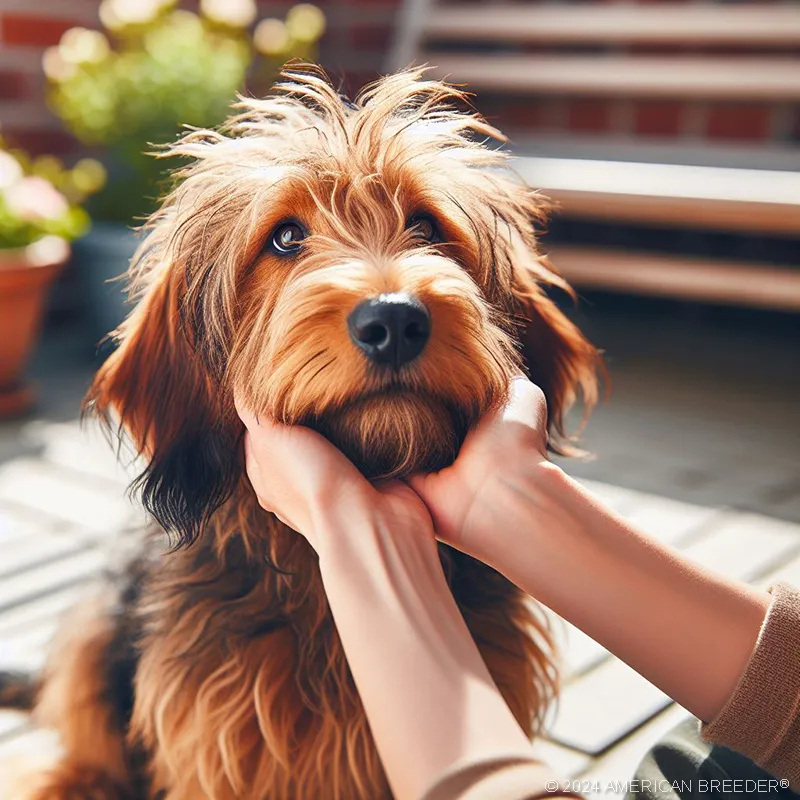Your Guide to the Enchanting Basset Fauve de Bretagne
The Basset Fauve de Bretagne is a charming and lively dog breed that hails from France. Before considering this breed, it's important to understand their characteristics and requirements. However, once you delve into their world, you'll discover fascinating facts and endearing traits that make them a wonderful addition to many families.
Appearance and Physical Characteristics
The Basset Fauve de Bretagne is a small to medium-sized breed. On average, they stand around 12.5 to 15.5 inches (32 to 40 cm) at the shoulder and weigh between 36.5 to 40 pounds (16.5 to 18 kg). Their physical features are distinctive and give them an adorable appearance.
These dogs have a short, dense, and harsh coat that provides protection in different weather conditions. Their coat colors range from wheaten to red, often with black markings on the face and ears. Their expressive eyes are dark and almond-shaped, and their long, droopy ears add to their endearing look.
Breed Background and Country of Origin
The Basset Fauve de Bretagne has a rich history that dates back several centuries in France. They were initially bred for hunting small game, such as rabbits and hares. Their excellent scenting ability, agility, and determination made them well-suited for this purpose.
While their primary role was as hunting dogs, the Basset Fauve de Bretagne became popular among families as loyal companions. They have a significant presence in French culture and are considered a national treasure for their versatility and charming personality.
The Basset Fauve de Bretagne is known for its friendly and affectionate nature. They are generally good-natured and have a playful disposition. This breed tends to be sociable and gets along well with children, making them an excellent choice for families. They also tend to get along well with other dogs and can coexist peacefully with cats if introduced properly. Their protective instincts are often evident, and they make excellent watchdogs, alerting their owners to any potential dangers.
Recognition by AKC (American Kennel Club)
The Basset Fauve de Bretagne was officially recognized by the American Kennel Club (AKC) in 2020. This recognition is important as it helps establish breed standards and provides opportunities for the breed to participate in AKC-sanctioned events and competitions.
Training Suggestions
When it comes to training, the Basset Fauve de Bretagne is generally intelligent and eager to please. However, they can be independent and occasionally stubborn. Positive reinforcement methods, such as rewards and treats, work best for this breed. Patience, consistency, and a gentle approach are key to successful training sessions. It's important to note that their strong sense of smell can sometimes distract them during training, so it's helpful to choose a quiet and low-distraction environment. Early socialization is crucial to ensure they grow into well-rounded and well-behaved dogs.
Care Notes
 The Basset Fauve de Bretagne has moderate grooming needs. Their short coat requires regular brushing to keep it looking tidy and to remove loose hairs. Bathing should be done when necessary to keep them clean and fresh. Additionally, regular ear cleaning is essential to prevent any potential ear infections.
The Basset Fauve de Bretagne has moderate grooming needs. Their short coat requires regular brushing to keep it looking tidy and to remove loose hairs. Bathing should be done when necessary to keep them clean and fresh. Additionally, regular ear cleaning is essential to prevent any potential ear infections.
Exercise is important for this breed to keep them mentally and physically stimulated. Daily walks and playtime in a secure, fenced area are recommended. While they have moderate energy levels, they will appreciate additional activities such as scent games and interactive toys.
Like all dog breeds, the Basset Fauve de Bretagne may be prone to certain health issues. These can include hip dysplasia, ear infections, and obesity.
Feeding guidelines: It is important to provide the Basset Fauve de Bretagne with a balanced and nutritious diet to maintain their overall health. Consult with your veterinarian to determine the appropriate amount of high-quality dog food based on their age, size, and activity level.
Shedding: The Basset Fauve de Bretagne has a moderate shedding level. Regular brushing helps minimize loose hair and keeps their coat looking its best. While they are not considered hypoallergenic, some individuals with allergies may find them more tolerable compared to breeds with heavier shedding.
Tendency to drool: The Basset Fauve de Bretagne is not known for excessive drooling. However, as with any dog breed, individual variations may occur.
Snoring tendencies and noise level during sleep: Due to their short muzzles, the Basset Fauve de Bretagne may be prone to snoring during sleep. This characteristic adds to their endearing charm but may be something to consider if you're sensitive to noise during nighttime.
Loudness level of bark and tendency to bark: Basset Fauve de Bretagne dogs have a distinctive and melodic bark. While they are generally not excessive barkers, they may alert you to any potential threats or visitors with their unique vocalizations.
Compatibility with specific living arrangements or environments: The Basset Fauve de Bretagne can adapt well to different living arrangements, including apartments or houses with small yards. However, they thrive best in environments where they have access to regular exercise and mental stimulation. They should not be left alone for extended periods as they may become bored or develop separation anxiety.
Conclusion
In conclusion, the Basset Fauve de Bretagne is a delightful and friendly dog breed that brings joy and companionship to many households. With their endearing appearance, affectionate nature, and adaptability, they make excellent family pets. However, responsible ownership is crucial. Continue researching and seek guidance from breed experts to ensure you fully understand the unique needs and requirements of this wonderful breed. By providing them with love, care, and a nurturing environment, you can enjoy a lifetime of happiness with your Basset Fauve de Bretagne.
Did You Enjoy this Article? Share it and Help Us Spread the Word!
If you found this article helpful, we'd appreciate it if you could share it with your friends or link to it from your website, blog, or group! You can also use the convenient social share tabs on the left side of the screen to instantly share this page to your social media feed. For more ways to support and promote the American Breeder Community, visit our Share & Promote Together page for social media posts and memes you can copy and share. Your support means the world to us!
Disclaimer: The information provided in this article is for general informational purposes only and does not constitute legal, medical, financial, or professional advice. While we strive for accuracy, we make no representations or warranties regarding the completeness, accuracy, reliability, or suitability of the information. Please consult with a professional before making decisions based on the content provided. American Breeder Inc. assumes no responsibility for any errors or omissions or for the results obtained from the use of this information.



